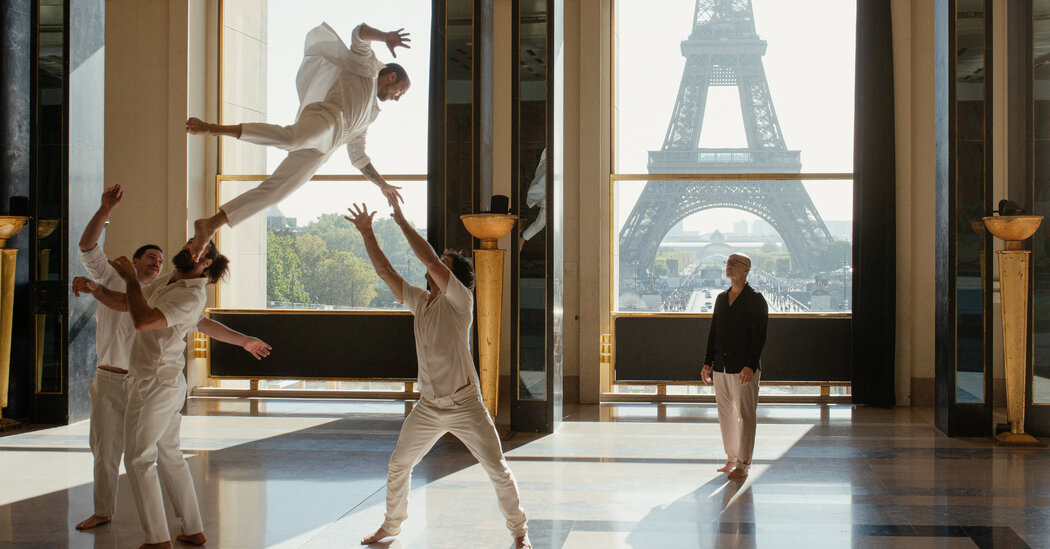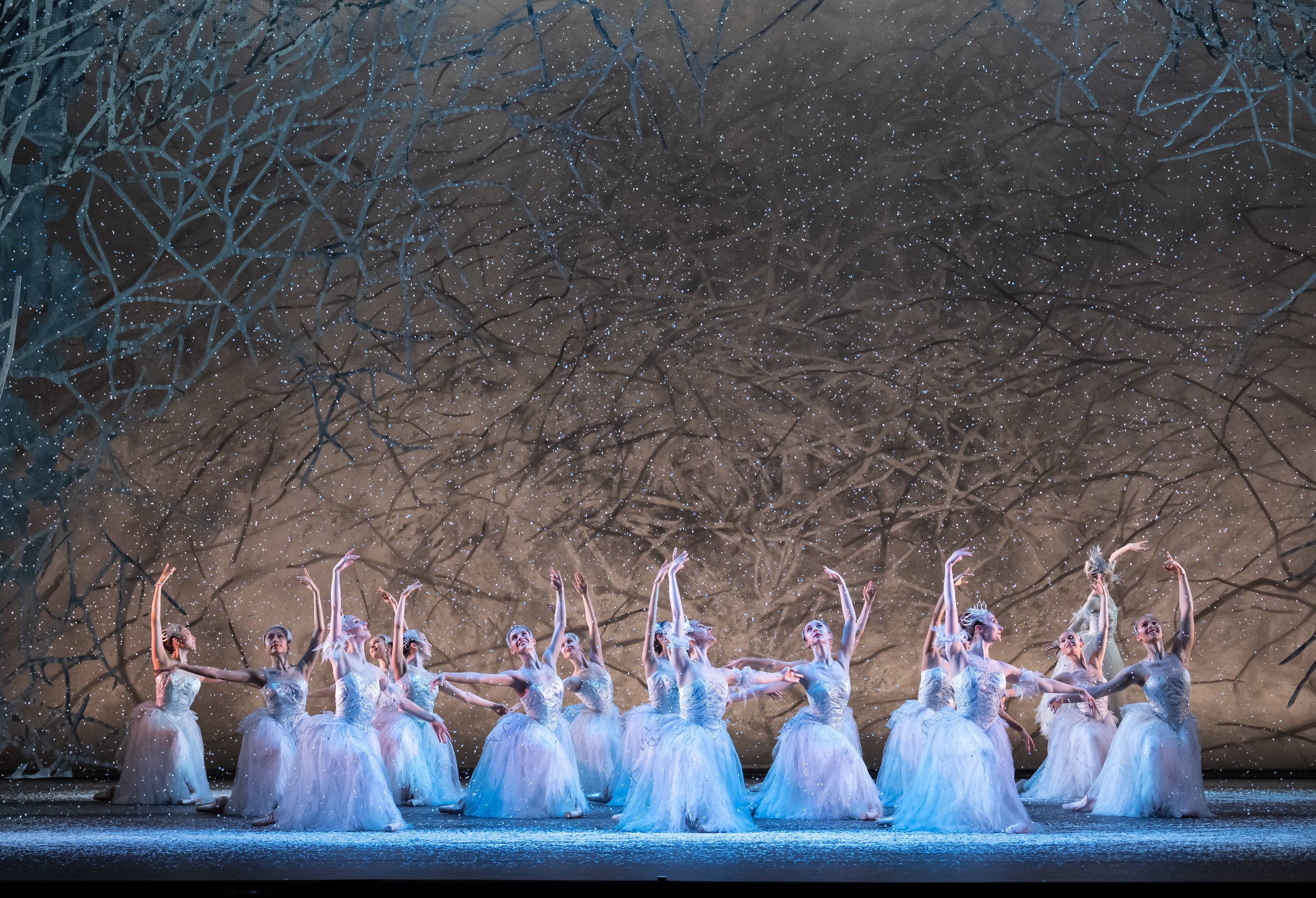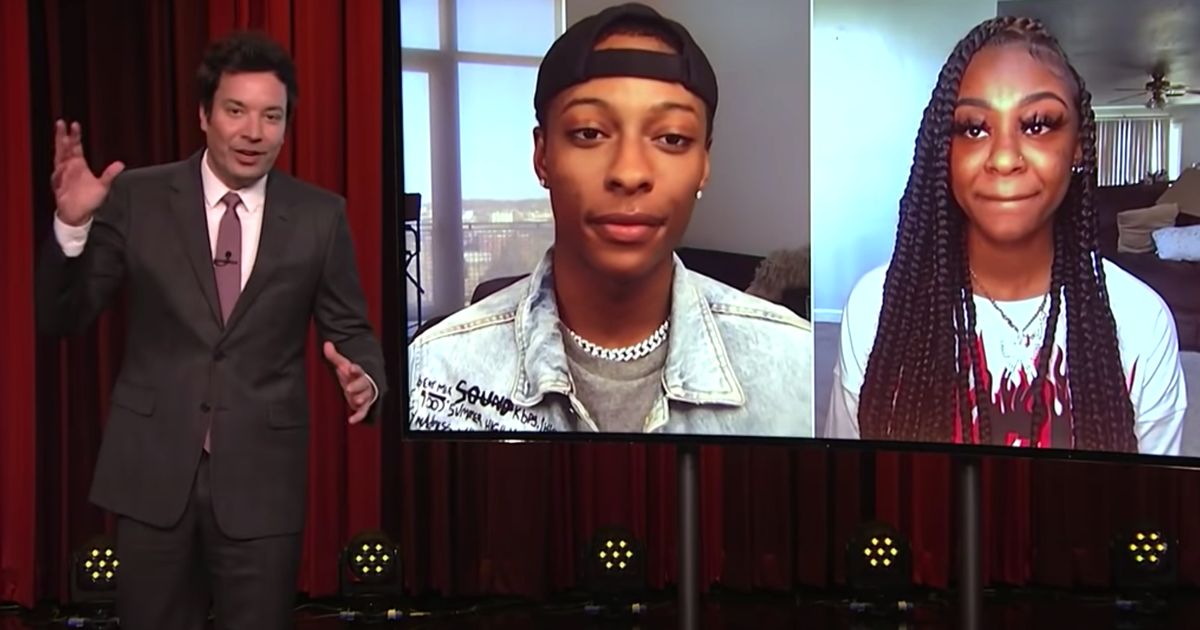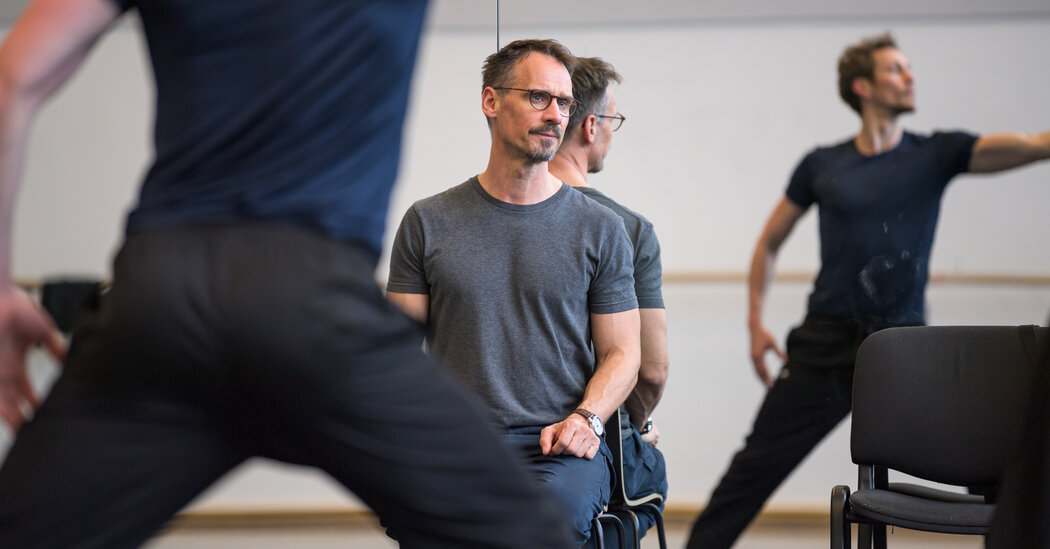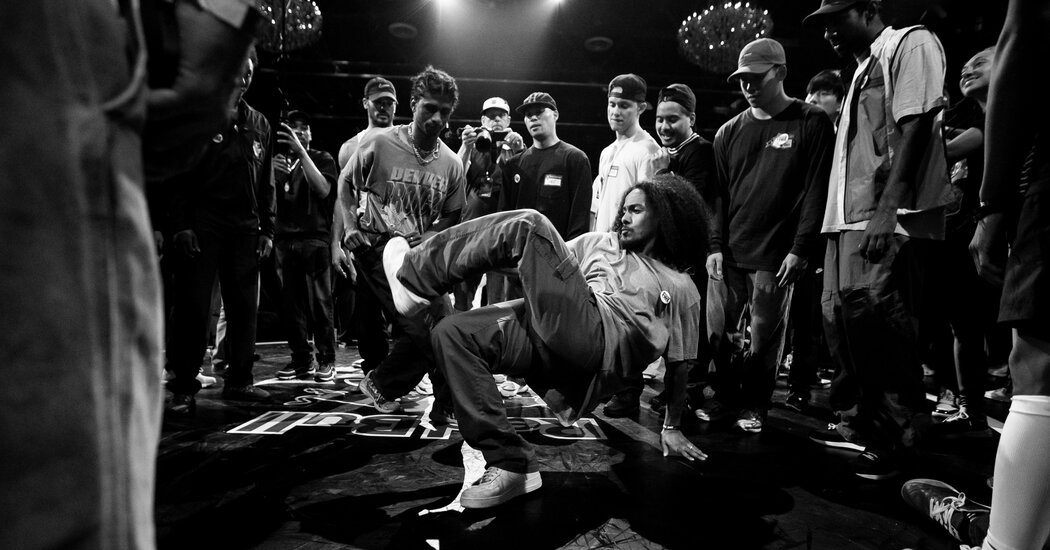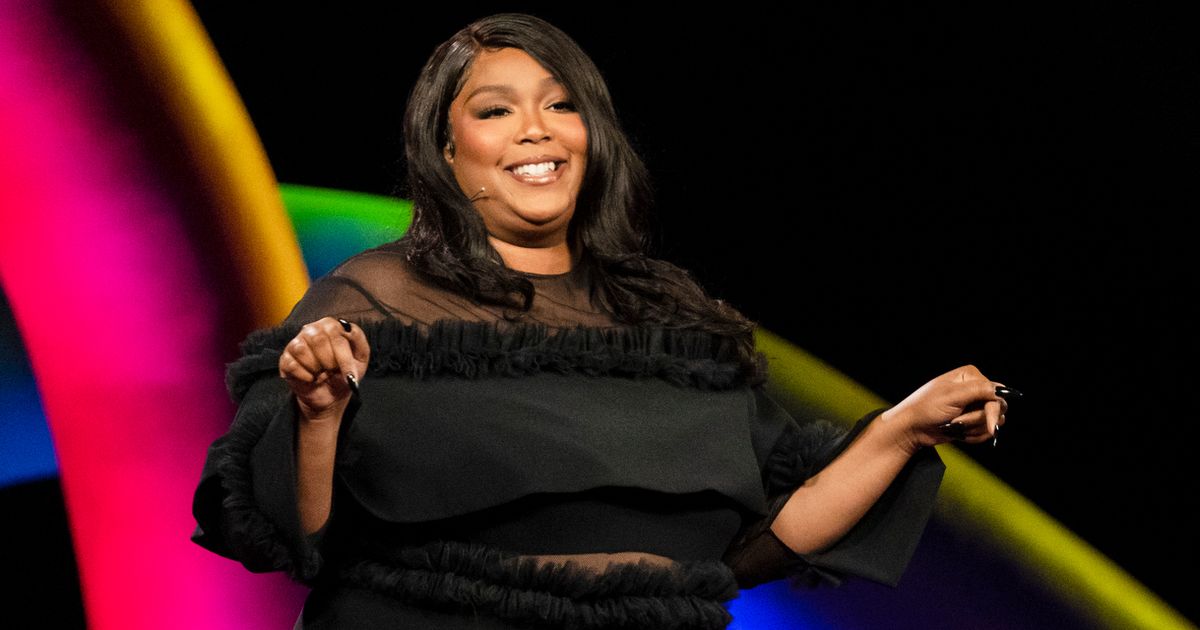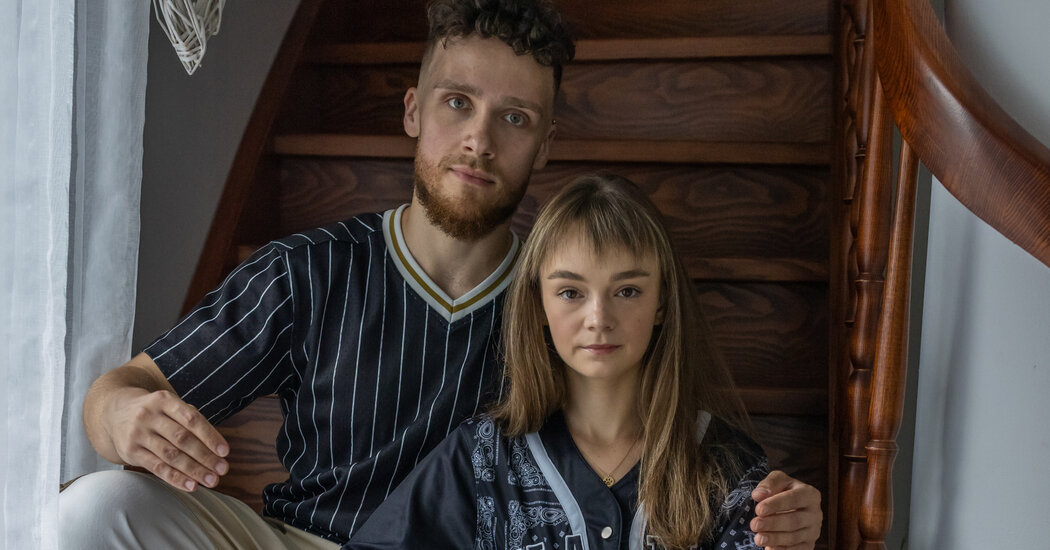Pushing the Body to Extremes to Find Serenity
[ad_1]
Why do some people put their bodies through extreme acts? Why cross the Seine on a wire or climb a mountain during a thunderstorm? The reasons are probably the opposite of what you imagine: Peace. Calm. Serenity.
In his evening-length “Corps Extrêmes,” the choreographer Rachid Ouramdane works with acrobats, a climber and a modern tightrope walker, or highliner, to explore what lies behind the quest for thrills in such activities — and the on-the-spot mental clarity that comes with it.
When the body is pushed to its limits, when fear really sinks in, you must deal with every part of yourself, including “your vulnerability, your fragility,” Ouramdane said in a video interview from France. “The notion of risk is always present. But it’s not a risk that you don’t consider. It’s almost the opposite, a risk that becomes your partner; a risk that you are used to dealing with.”
Risk, in essence, becomes an accomplice, creating a hyper alertness or sensitivity to the present moment. As the highliner Nathan Paulin says in a voice-over in the production, “To keep my balance on this thin moving wire, I need to be 100 percent focused on everything that happens, on my body and everything around me, so I feel everything more intensely.”
For all of its action, a meditative quality runs through “Corps Extrêmes,” a melding of performance and spoken word that opens at the Brooklyn Academy of Music on Oct. 27 as part of Dance Reflections, a festival sponsored by Van Cleef & Arpels.
During the production, performed by Compagnie de Chaillot, a film of mountainous landscapes, shot from many daunting angles, is projected on the back of the stage, which is also a white climbing wall. In the film, we see the climber Nina Caprez and Paulin, who holds his balance in the wind while on a highline between cliffs; both are rendered diminutive against the natural world.
Performing live, Paulin — a world-record-holding highliner — crosses the stage on a wire as the eight acrobats balance on one another’s shoulders and scramble up the climbing wall. Essentially, they stretch the stage from horizontal to vertical as a dreamy guitar score by Jean-Baptiste Julien plays; we also hear spoken testimonies by Paulin and Caprez about the freedom they find in exposing their bodies to nature. Watching it all unfold is almost like floating.
Ouramdane, a French-Algerian choreographer who, in 2021, became the director of the Chaillot-Théâtre National de la Danse in Paris, has created something not only to watch, but also to feel. This is a choreography, not just of bodies, but of awareness. “When you see the show,” he said, “it’s super soft.”
For New Yorkers, it is a chance to see a different kind of work from Ouramdane, whose American debut, in 2006, was the masterly “Les Morts Pudiques” (“Discreet Deaths”), a solo exploring the death fixation among young people. Ouramdane often focuses on vulnerable populations, exploring the way identity affects people using a combination of movement and text, which is generated from interviews he conducts. He creates portraits that consider both the physicality of his subjects and what’s going on in their minds — work that he continues with the cast of “Corps Extrêmes.”
“You realize that they are not supermen or superwomen,” Ouramdane said, speaking of participants in extreme sports. “They are just very confident with their fragility, with their vulnerability. And that’s what allows them to do those totally unexpected things”; for them fragility can “be a strength.”
Ouramdane first started thinking about extreme sports and outdoor activities after being approached by the French acrobatic collective Compagnie XY to make a work. Compagnie XY knew that Ouramdane had experience working with a diverse range of bodies — older people, athletes, children. And Ouramdane knew that the acrobats’ practice was virtuosic.
“What really touched me was not so much the crazy things they were doing in the air, but the special attention they have to each other,” Ouramdane said. “How they have to take care of each other and the softness of their touch, the knowledge of how to receive a body, how to support a body, and the ways they watch each other. I wanted to zoom in on this sensibility.”
They created “Möbius,” a production exploring murmuration, or the way large groups of birds soar together in a flock, changing direction as one. Their exploration has influenced Ouramdane in his work with large repertory companies, he said, in which he structures moving groups like flocks, incorporating “this kind of blurring composition.” It also influenced his decision to use acrobats in “Corps Extrêmes.”
“You start to see forms, shapes.” he said. “As soon as it appears, it disappears. It’s a kind of permanent morphing.”
He got to know practitioners of extreme sports because of where he lives: in the French Alps where he has been able to observe the world of climbers and base jumpers. “In such sports, many practitioners are considered crazy people,” he said, “people who like to play with death. But they pay special attention to everything that is alive around them: landscape, nature. Their practice is possible because they know how to deal with a cliff, with the texture of a rock, with the modulation of the wind.”
Some of the athletes spoke to him about how in school, “no one teaches you how to enjoy the rain or your face or the wind in your back,” Ouramdane said. “It is a bit romantic when they say that, but those are really the things they work with.”
Of course, in “Corps Extrêmes,” there is no wind or rain for the performers to contend with. Nor are the distance and height of Paulin’s onstage journey anything like what he has experienced outdoors. At first, Paulin said, being in the theater was hard for him: His practice is inextricably linked to the immensity of the landscape and the unpredictability of nature. He has crossed 2.2 kilometers (about 1.4 miles) of slackline at Mont-Saint-Michel in Normandy, a world record; in comparison, a theater is like a playground.
“Normally, I’m on really long lines,” he said. “In the theater, it’s about 20 or 30 meters maximum,” or about 65 to 100 feet.
Replacing a mountain with a stage has been meaningful in other ways, too. Ouramdane asked Paulin to slow down his movement for the production. “When you have to do it slower, you have to be really precise,” Paulin said. “I do what I’m used to doing outside, but Rachid asked me to do it really slowly so that the audience can see every small detail. My job is pretty easy. For the acrobats, it’s really hard. At the end, they run in every direction.”
The presence of acrobats in “Corps Extrêmes” changes the atmosphere, he said; it anchors him. For once, he is not alone. And while there is no wind — which he refers to in a voice-over as “as much a friend as an enemy” — Paulin can tap into something else: the audience.
“It’s strange, everything is flat, but I can feel the people,” he said. “When I’m outside, I do it for me. Like to grab something from the outside, to take something for me. And when I do a show, I try to give it back to the audience.”
Ouramdane is thinking more about audiences, too — or attracting different kinds — especially with his leadership role at Chaillot, one of five national theaters in France, and the first to be focused on dance. Exploring, even further, the relationship between art and sports, he will create several projects related to the Olympic Games being held this summer in Paris, for which the Chaillot Theater is an official site. He hasn’t abandoned creating dances, but, increasingly, his approach isn’t limited to the stage.
“That’s what brings me to dance: It’s to see how dance meets people, how dance faces social subjects, how dance meets all fields, actually — not only in the dance world, but how dance has an impact,” he said, referring to its potential for healing, education and pleasure. “Dance is in all the layers of our society, from weddings to parties or leisure or care. We see dance everywhere now.”
Body and dance practices aren’t just for dancers. They, too, are for everyone. “You know, a lot of people recently asked me, ‘Can you still do a project being in Chaillot, being in charge of such an important institution?’” he said. “I always answer ‘that makes me even more of an artist.’”
There are many ways for dance to have an impact. “You can find a lot of creativity by organizing a festival, by organizing an artistic camp for teenagers — and suddenly you realize that through dance you give the possibility to those teenagers to really improve their childhoods,” he said. “I think that is an art attitude. It’s an art action.”
[ad_2]
Source link
